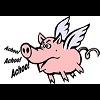Boost Response Help!
Announcements
-
Similar Content
-
Latest Posts
-
By joshuaho96 · Posted
All of this is making it seem clear that running the Coppermix twin was definitely the way to go, especially in hindsight with how insane tariffs have gotten and the strength of the USD vs yen at the time. -
That sounds like no chance of even importing one for road registering then Now I see why Duncan wants to check LHD rules for Targa... I wonder how "bolt in" the AWD would be if you got one imported from the US and swapped it to an AUD one
-
Ha ha ha, that's fair mate! We have the crackhead dogs now. Mainly because the missus wants the crazy dogs while she still has the energy and capacity to be able to keep up with them! Ha ha our current two are both Working GSD, there brothers and sisters (from the same litters) are in Police, Corrective Services, and I believe one did end up in defence force too. They're wild and fun, yet right now, both curled up asleep on the lounge room floor while we watch some TV. Mal is very likely the next dog (unless I get my couch potato guardian dog 😛 ) What are your Kitties names? Are you planning some house work, like those high kitty shelves, built in scratching post, and some cat passages from one room to another room?
-




Recommended Posts
Create an account or sign in to comment
You need to be a member in order to leave a comment
Create an account
Sign up for a new account in our community. It's easy!
Register a new accountSign in
Already have an account? Sign in here.
Sign In Now